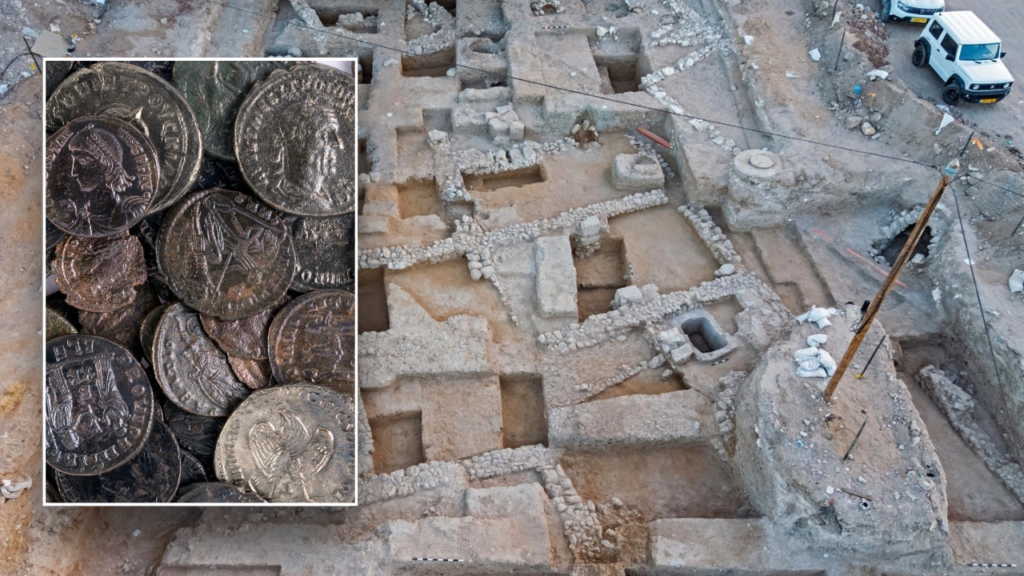Archaeologists in Israel have recently made a significant discovery that sheds light on Jewish life in ancient Roman-era Israel. The Israel Antiquities Authority (IAA) unveiled this discovery on Facebook, announcing the excavation of a site in Lod, located in central Israel. The site revealed the remains of a destroyed Jewish public building that once stood in Syria Palaestina, or Roman Palestine. The building contained impressive stone and marble artifacts, as well as Greek, Hebrew, and Latin inscriptions. One inscription even bore the name of a Jewish man from a priestly family, adding to the historical significance of the find.
The inscriptions and the absence of pig bones at the site suggest a strong connection to the Jewish community. Additionally, archaeologists uncovered a hoard of 94 coins dating back approximately 1,650 years. The coins are believed to date back to the time of the Gallus Revolt, a period of Jewish rebellion against Roman Caesar Flavius Constantius Gallus. This revolt led to the destruction of major Jewish communities such as Lod, Zipori, and Tiberias. The oldest coins found at the site could have been minted as early as 221 AD. Historians speculate that the coins were purposely hidden during the revolt with the intention of being retrieved once the situation calmed down.
Two of the site’s excavators, Shahar Krispin and Mor Viezel, suggested that the building likely served as living quarters for the city’s Jewish elders. They referenced Talmudic writings that describe Lod as a significant Jewish center following the destruction of the Second Temple in Jerusalem. The building’s destruction down to its foundation indicates the violent suppression of the revolt, challenging earlier studies that suggested it was a mere local uprising.
The mayor of Lod, Yair Revivo, expressed the emotional significance of the discovery, highlighting its importance in preserving the city’s Tannaitic period heritage. Lod, known for being one of the oldest cities in the world, has a rich Jewish history that is further illuminated by these findings. Professor Joshua Schwartz of the Israel Antiquities Authority Council raised questions about the building’s function, speculating whether it served as a synagogue, study hall, meeting place for elders, or a combination of these purposes. The building’s size, the coin hoard, and other archaeological finds align with Lod’s portrayal as a center of Torah-true Jewish life during the Mishna and Talmud periods.
Schwartz emphasized Lod’s role as a leading Jewish community with elders that persisted even after its destruction during the Gallus Revolt. The discovery not only provides valuable historical insights but also underscores Lod’s significance in Jewish history. This unique find adds to our understanding of Jewish life in ancient Roman-era Israel and highlights the resilience of the community in the face of adversity.












